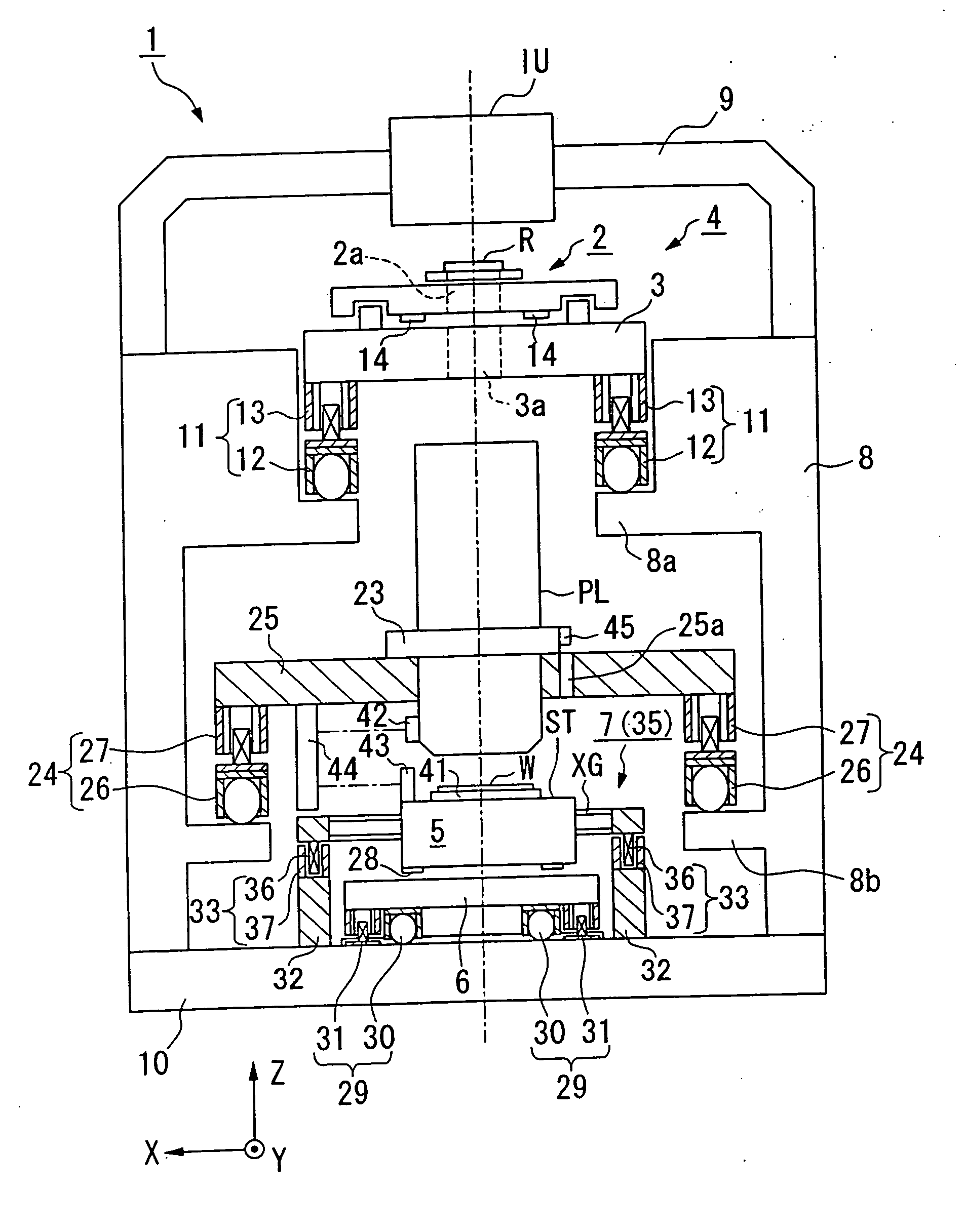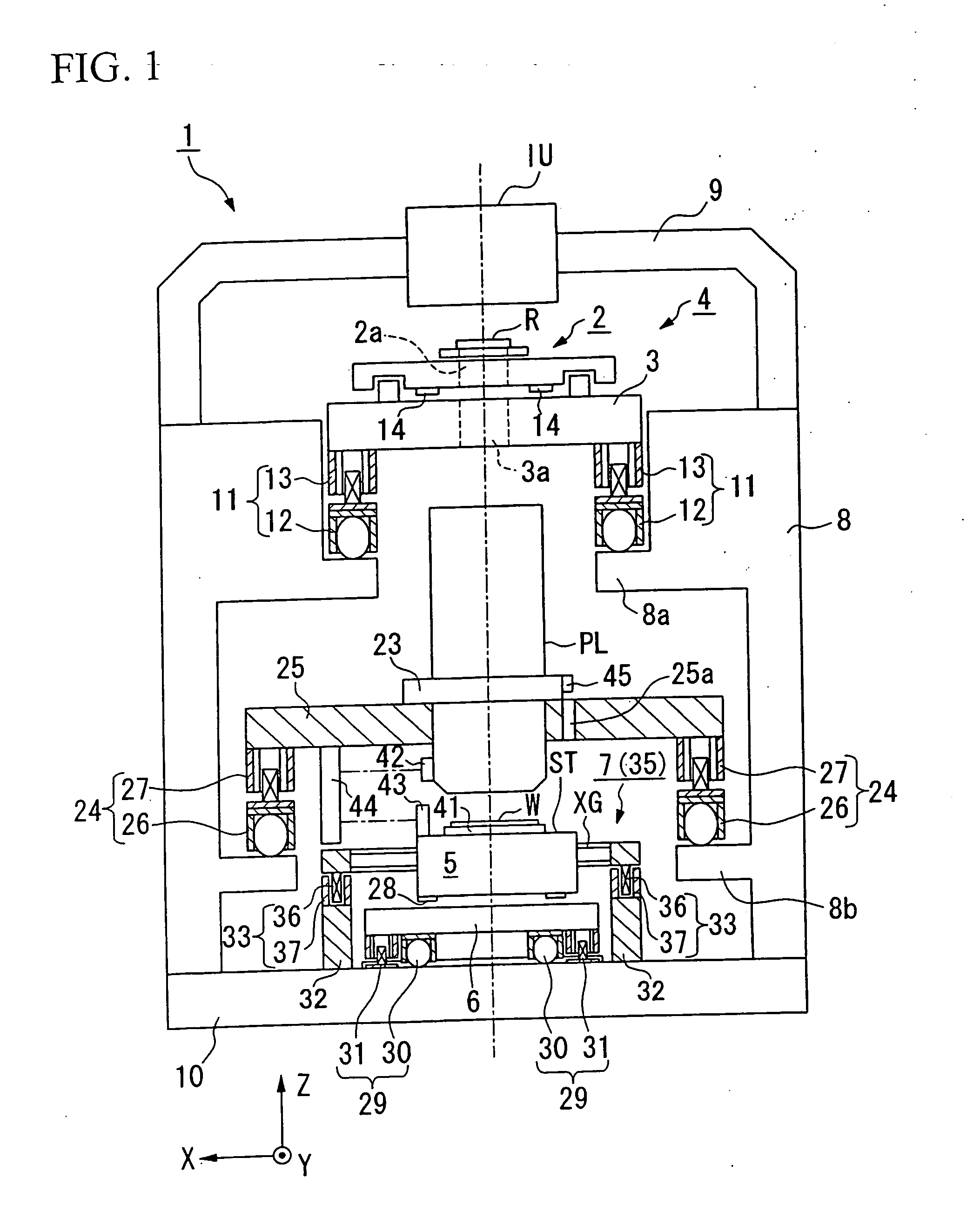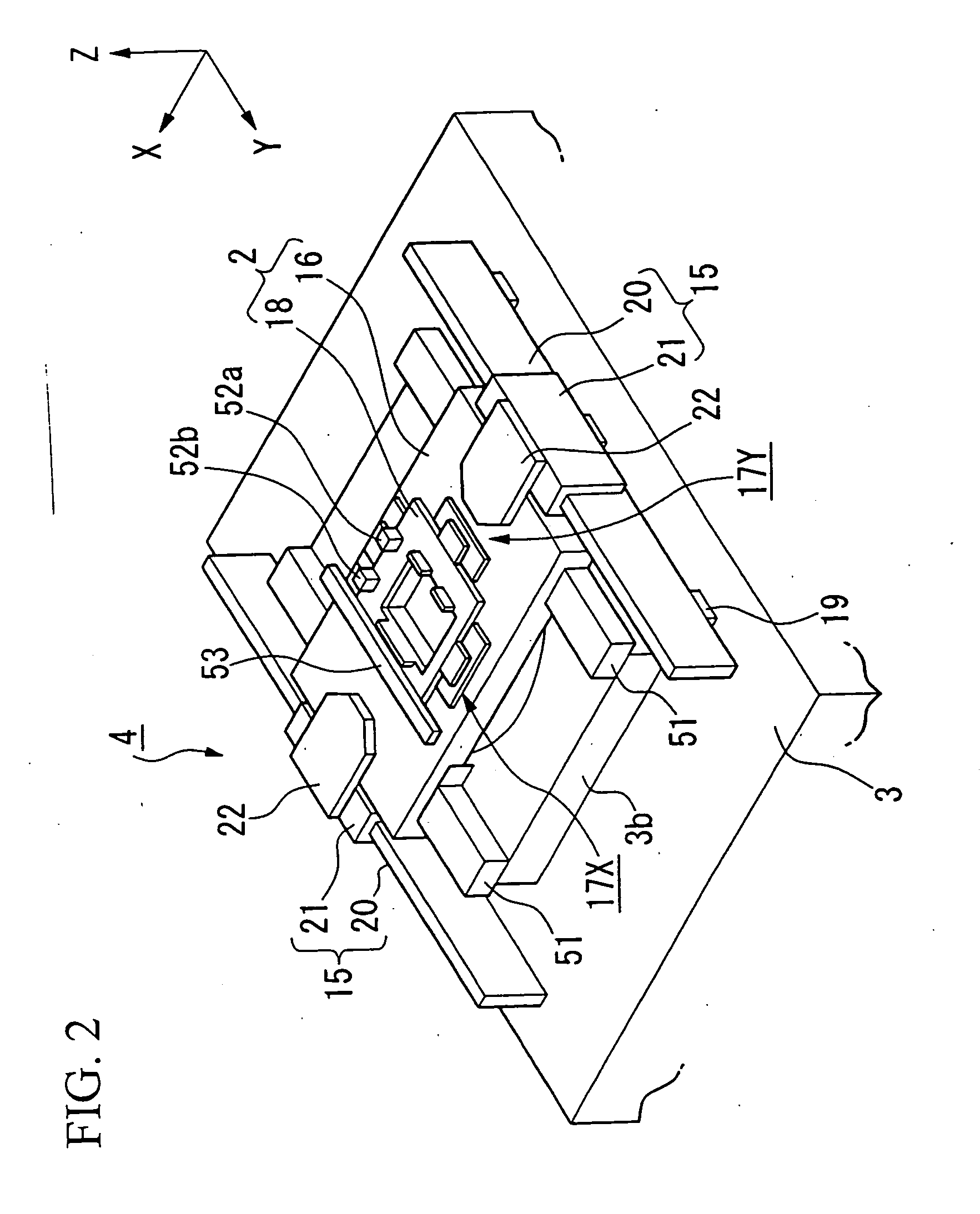Exposure system and device production process
a technology of exposure system and production process, applied in the field of exposure system, can solve the problems of deformation in stages and surrounding components, the risk of aforementioned baseline amount shifting during exposure, and the prior art exposure system and device production process still had the problems described below, so as to achieve superior overlay accuracy and inhibit baseline shift
- Summary
- Abstract
- Description
- Claims
- Application Information
AI Technical Summary
Benefits of technology
Problems solved by technology
Method used
Image
Examples
first embodiment
[0034] The following provides an explanation of an exposure system and device production process of the present invention with reference to FIGS. 1 through 7. Here, an explanation is provided using the example of the case of using a scanning stepper for the exposure system that transfers a circuit pattern of a semiconductor device formed on reticle to a wafer while synchronously rotating the reticle and wafer during exposure (during pattern transfer).
[0035] Exposure system 1 shown in FIG. 1 is roughly composed of illumination optics IU, which illuminates a rectangular (or arc-shaped) illumination region at uniform luminosity on reticle (mask) R with illumination light for exposure from a light source (not shown), a stage system 4, which includes a reticle stage (mask stage) 2 that moves while holding reticle R and a reticle surface plate 3 that supports said reticle stage 2, projection optics PL, which projects illumination light emerging from reticle R onto wafer (substrate) W, a s...
third embodiment
[0098]FIG. 9 shows a projection system as claimed in the present invention.
[0099] In the present embodiment, the projection optics and wafer stage 5 are designated as temperature control targets of first control system 61, while reticle stage 2 is designated as the temperature control target of second control system 62. In first control system 61, the temperatures of circulation system C1, which circulates through projection optics PL and alignment system AL, and circulation system C6, which circulates through wafer stage 5, are controlled by a single temperature regulator 87. This temperature control is carried out sensor 69 detecting the temperature of coolant that circulates through projection optics PL, and controller 67 controlling the driving of temperature regulator 87 based on the detected results. In this case, the temperature of wafer stage 5 is controlled to a range within ±0.01° C. in the same manner as projection optics PL. Furthermore, in second control system 62, reti...
second embodiment
[0100] In the present embodiment as well, the temperature of reticle stage 2, which generates the largest amount of heat, can be controlled independently and separately from projection optics PL and wafer stage 5, which generate comparatively small amounts of heat, and the optimum cooling conditions can be set corresponding to the amount of heat generated by each component. Moreover, in comparison with the second embodiment, since the coolant temperatures of two circulation systems C1 and C6 can be controlled with first control system 61, the system constitution can be simplified.
PUM
| Property | Measurement | Unit |
|---|---|---|
| wavelength | aaaaa | aaaaa |
| wavelength | aaaaa | aaaaa |
| wavelength | aaaaa | aaaaa |
Abstract
Description
Claims
Application Information
 Login to View More
Login to View More - R&D
- Intellectual Property
- Life Sciences
- Materials
- Tech Scout
- Unparalleled Data Quality
- Higher Quality Content
- 60% Fewer Hallucinations
Browse by: Latest US Patents, China's latest patents, Technical Efficacy Thesaurus, Application Domain, Technology Topic, Popular Technical Reports.
© 2025 PatSnap. All rights reserved.Legal|Privacy policy|Modern Slavery Act Transparency Statement|Sitemap|About US| Contact US: help@patsnap.com



